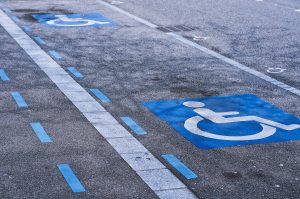Tackling the disability employment gap must be a priority after the pandemic
By Asli Atay
Date:
18 05 2021Authors:
Tagged by:
Share:
Disabled people have been among those hardest hit by the pandemic and experience shows that many will suffer the impacts for longer. The 2008 recession also had a disproportionate impact on disability employment. We should learn from our experience of the 2008 recession, and avoid making the same mistakes as the economy reopens following the lockdowns.
Learning from experience – past employment programmes and their impact on disability employment
Disabled people were disproportionately affected by unemployment during the 2008 recession, and were more likely to move into inactivity after the recession compared to non-disabled people. A 2009 study by the Leonard Cheshire Charity found that disabled people were also more likely to be targeted for redundancy than non-disabled people.
While disabled people were more likely to have lost work during the 2008 recession, they were also less likely to benefit from employment support put in place during the recovery. The Work Programme, launched in 2011, was the Government’s flagship welfare-to-work programme. It aimed to support people who were long-term unemployed or at risk of long-term unemployment.
In many ways, the Work Programme was a success. The Department for Work & Pensions (DWP) evaluation of the Programme showed that people who participated in the scheme spent more days in employment and were less likely to receive work benefits compared to those who weren’t part of the programme.
However, the performance of the Work Programme was much less effective when it came to supporting disabled people and older people.
The evaluation of the Work Programme showed that disabled people were less likely than non-disabled people to have been in work during their two years on the programme. Only 28% of disabled people and those with health conditions lasting 12 months or more had some work during the period compared to 55% of people without disabilities or health conditions.
Other previous employment support programmes have also been less effective for disabled people and DWP has very limited evidence of what works in the current context when it comes to supporting disabled people to enter work or stay in work, according to a 2019 National Audit Office report.
Looking forwards – tackling post-Covid inequalities
As things stand, being disabled is one of the main factors impacting people’s chances of returning to work. According to Office for National Statistics, between 2007 and 2020, only 7.6% of disabled people who were out of work, but who had previously had a job, returned to employment in the next three months, compared to 26.8% of out of work non-disabled people.
If we want to stay committed to our goal of closing the disability employment gap and to mitigate the disproportionate impact of the pandemic on disabled people, we need to gain more of an insight into what works for disabled people in getting into employment and staying employed.
For this reason, L&W conducted a review in 2019 to explore what works in supporting disabled people to enter the labour market and stay in jobs. When it came to local strategies a few things emerged as the key aspects of success. Tailoring the service to individuals’ needs and aspirations was one of them.
One of the main premises of the Work Programme was to provide personalised support to participants. However, when it came to implementation, we found that disabled people were less likely to report that the employment support they received was tailored to meet their needs compared to the rest of the participants. Only 30% of participants to the Work Programme with a disability or long-term illness said they had been offered support related to their health condition or disability.
Personalised services are important but there are also other factors influencing the effectiveness of employment programmes. Our evidence review showed that the number of specialist advisors, lower caseloads, employer engagement, programmes with good fidelity and integrating support to other services are also important in designing and implementing successful services.
Disability employment after the pandemic
With the positive progress made towards flexible and remote working during the pandemic, we now have a unique opportunity to rebuild the workplace around more inclusive working practices. This should enable us to move towards narrowing the disability employment gap, widening the employment opportunities available to disabled people, and improving access to higher pay and seniority.
L&W has been researching the impact of the pandemic on disability employment and the lives of disabled people. Our research looks at the impact of the pandemic on disability employment and sets out a series of recommendations to ensure disabled people benefit in the recovery.
The report will be published in the coming weeks and will be available on the Black Stork Charity’s and L&W’s website – watch this space!
Read our new report, Disability Employment: from pandemic to recovery
